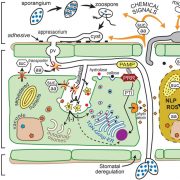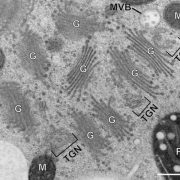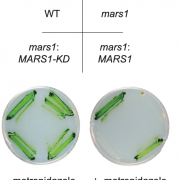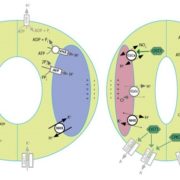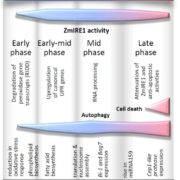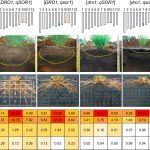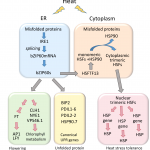More than photosynthesis: The chloroplast’s role in plant cell defense pathways ($) (Cell)
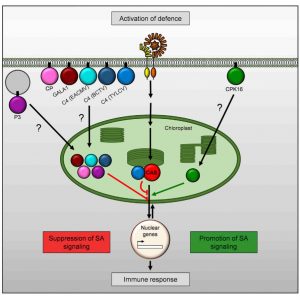 Chloroplasts are involved in various plant cell functions outside of photosynthesis including defense activation. How is the chloroplast able to do so? In this study, Medina-Puche et al. characterized the molecular function and cellular localization of the Tomato yellow leaf curl virus-derived C4 protein. The authors show that when expressed in plant cells, the protein initially localizes to the plasma membrane (PM), but re-localizes to the chloroplast when the cell initiates an immune response. This re-localization aids viral infection as the C4 protein can suppress chloroplast-specific defense mechanisms, specifically the biosynthesis of the defense hormone salicylic acid. The authors took inspiration from this mechanism, noting that the C4 protein contains both PM and chloroplast localization signals, and screened the Arabidopsis proteome for similar localization signatures to identify molecular players in chloroplast-mediated immunity. They identified the Calcium-Protein Kinase 16 (CAK16), which like the C4 protein initially localizes to the PM but upon detection of biotic threat re-localizes to the chloroplast and contributes positively towards chloroplast immune response. The authors thus conclude that “Based on the results presented here, we propose that a protein re-localization-dependent pathway physically linking PM and chloroplasts and regulating defense exists in plants, and that this pathway has been co-opted by pathogens during evolution to suppress defense responses and promote virulence.” (Summary by Benjamin Jin) Cell 10.1016/j.cell.2020.07.020
Chloroplasts are involved in various plant cell functions outside of photosynthesis including defense activation. How is the chloroplast able to do so? In this study, Medina-Puche et al. characterized the molecular function and cellular localization of the Tomato yellow leaf curl virus-derived C4 protein. The authors show that when expressed in plant cells, the protein initially localizes to the plasma membrane (PM), but re-localizes to the chloroplast when the cell initiates an immune response. This re-localization aids viral infection as the C4 protein can suppress chloroplast-specific defense mechanisms, specifically the biosynthesis of the defense hormone salicylic acid. The authors took inspiration from this mechanism, noting that the C4 protein contains both PM and chloroplast localization signals, and screened the Arabidopsis proteome for similar localization signatures to identify molecular players in chloroplast-mediated immunity. They identified the Calcium-Protein Kinase 16 (CAK16), which like the C4 protein initially localizes to the PM but upon detection of biotic threat re-localizes to the chloroplast and contributes positively towards chloroplast immune response. The authors thus conclude that “Based on the results presented here, we propose that a protein re-localization-dependent pathway physically linking PM and chloroplasts and regulating defense exists in plants, and that this pathway has been co-opted by pathogens during evolution to suppress defense responses and promote virulence.” (Summary by Benjamin Jin) Cell 10.1016/j.cell.2020.07.020


